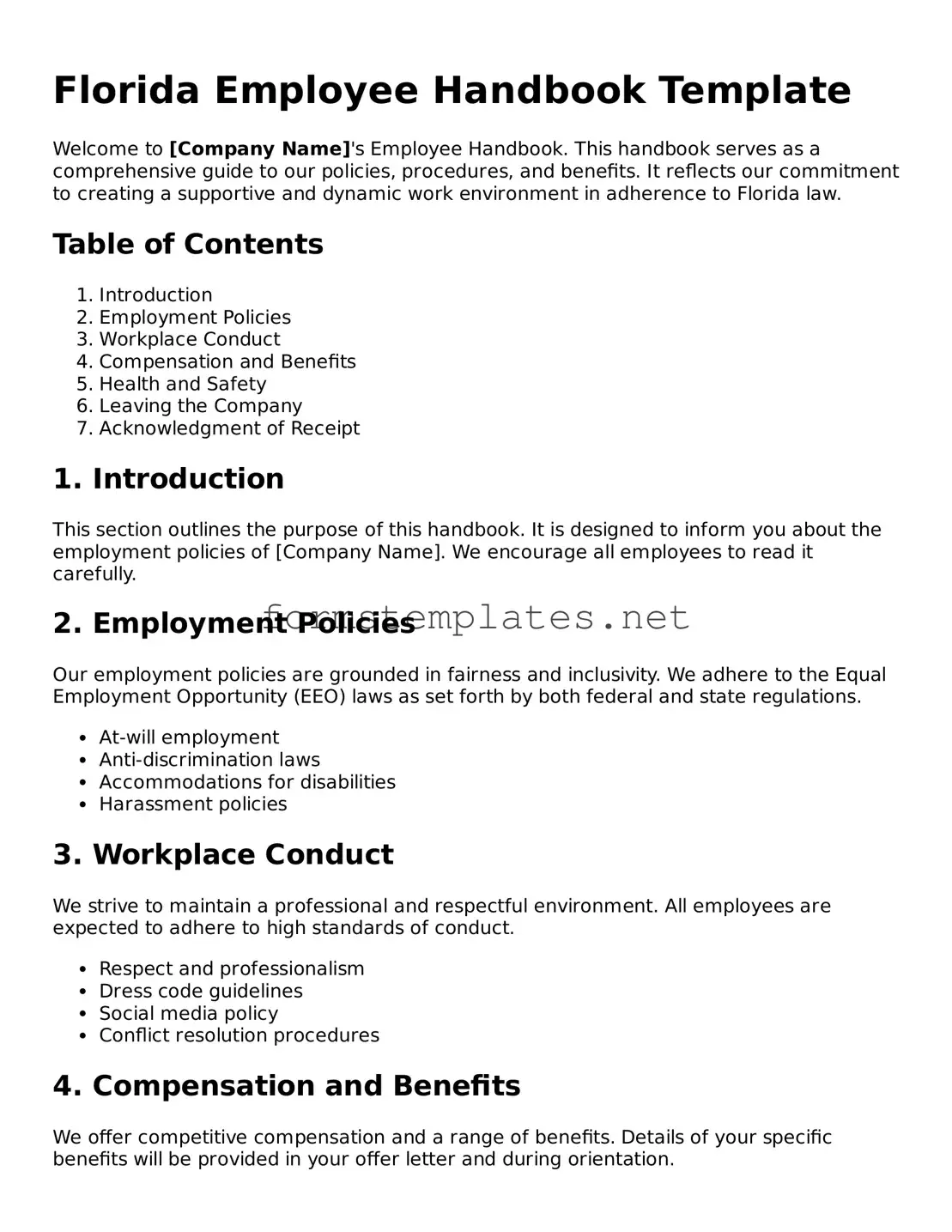Florida Employee Handbook Template
Welcome to [Company Name]'s Employee Handbook. This handbook serves as a comprehensive guide to our policies, procedures, and benefits. It reflects our commitment to creating a supportive and dynamic work environment in adherence to Florida law.
Table of Contents
- Introduction
- Employment Policies
- Workplace Conduct
- Compensation and Benefits
- Health and Safety
- Leaving the Company
- Acknowledgment of Receipt
1. Introduction
This section outlines the purpose of this handbook. It is designed to inform you about the employment policies of [Company Name]. We encourage all employees to read it carefully.
2. Employment Policies
Our employment policies are grounded in fairness and inclusivity. We adhere to the Equal Employment Opportunity (EEO) laws as set forth by both federal and state regulations.
- At-will employment
- Anti-discrimination laws
- Accommodations for disabilities
- Harassment policies
3. Workplace Conduct
We strive to maintain a professional and respectful environment. All employees are expected to adhere to high standards of conduct.
- Respect and professionalism
- Dress code guidelines
- Social media policy
- Conflict resolution procedures
4. Compensation and Benefits
We offer competitive compensation and a range of benefits. Details of your specific benefits will be provided in your offer letter and during orientation.
- Pay schedule
- Overtime policy
- Health insurance plans
- Retirement savings options
5. Health and Safety
Your safety and well-being are vital. We comply with the Occupational Safety and Health Administration (OSHA) standards and promote a healthy workplace.
- Emergency procedures
- Workplace safety training
- Reporting hazards
- Workplace injuries policy
6. Leaving the Company
Regardless of the circumstances, we handle all departures with care. Employees are encouraged to follow proper protocols when resigning.
- Notice period requirements
- Exit interviews
- Final paycheck procedures
- Benefits continuation options
7. Acknowledgment of Receipt
All employees must sign an acknowledgment form indicating they have read and understood this handbook. This ensures clarity and helps uphold our workplace values.
By fostering an open and engaging environment, [Company Name] hopes to support your success and well-being as a valued member of our team.
